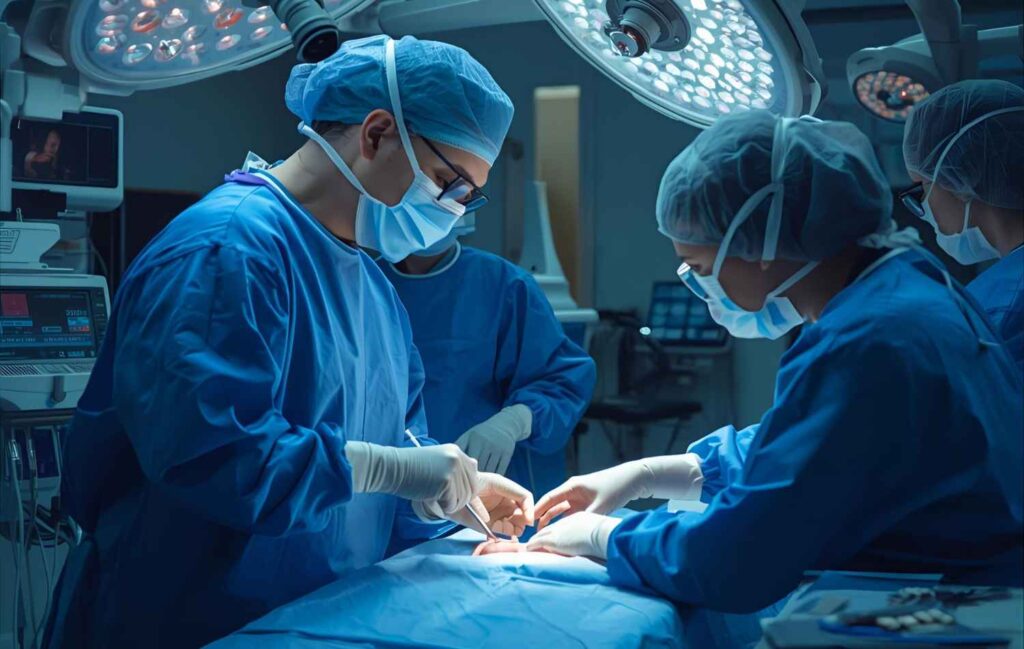
Modern medicine is a vast and diverse field encompassing dozens of complex specialties and subspecialties. Each medical domain requires unique knowledge, special skills, and specific hands-on training. Biotech Anatomy, as a leader in hands-on cadaver training, offers a wide range of training programs adapted to each specialty's unique requirements. In this article, we'll review the main medical specialties included in training programs and examine the unique value each field receives from hands-on learning.
Why Does Neurosurgery Require Special Hands-On Training?
Neurosurgery is considered one of the most complex and challenging specialties in medicine. The brain and nervous system are delicate and intricate structures where any mistake could have catastrophic consequences. Hands-on training in this field is crucial for developing the precision and confidence required to perform complex procedures.
Research by the American Association of Neurosurgeons shows that surgeons who underwent comprehensive hands-on training on real human organs demonstrate 45% improvement in precision levels in complex surgeries. Familiarity with anatomical variations, understanding spatial relationships in the cranial cavity, and practicing various surgical approaches are essential for success in this field.
How is Training Conducted in ENT Surgery?
Otolaryngology (ENT) is one of the most complex and multidisciplinary fields in medicine. It deals with delicate and vital structures in the head and neck – the airways, swallowing mechanism, auditory system, and cranial nerves. Every surgical procedure in this area requires high-level expertise, precision, and excellent navigation skills within intricate anatomical pathways.
The Importance of Hands-On Training
Research shows that practical, hands-on training enables doctors to gain in-depth familiarity with anatomical structures, build professional confidence, and perform delicate procedures safely and effectively. For example, a study conducted at Johns Hopkins Medical Center demonstrated a 35% improvement in anatomical navigation skills among ENT doctors who underwent hands-on training.
Advanced Learning Solutions
At https://biotechanatomy.co.il/, you’ll find specialized ENT surgical training courses designed for real-world practice on actual head and neck structures.
What Makes Foot and Ankle Surgery Training Special?
Foot and ankle surgery is a complex subspecialty requiring precise understanding of lower limb biomechanical anatomy. The complex structure of bones, ligaments, and muscles in the foot necessitates thorough hands-on training. Any injury to this area could affect the patient's walking ability and mobility.
Training includes practice on real lower limb organs, enabling trainees to familiarize themselves with anatomical variations, understand biomechanical complexity, and practice various surgical approaches. Topics like ligament tear repair, flat foot surgeries, and complex fracture treatment are learned hands-on.
How is Head and Neck Surgery Training Conducted?
Head and neck surgery is a complex field including tumor treatment, functional and aesthetic reconstruction, and trauma management. This area includes many vital structures in high concentration – airways, major arteries, critical nerves, and complex functional systems.
Biotech Anatomy LTD offers advanced head and neck surgery courses including practice on real neck models. Trainees learn to identify vital structures, avoid damage to critical nerves, and perform complex reconstructions. Fresh organ supply enables realistic learning experience preparing surgeons for field challenges.
What Does the Spine Surgery Course Include?
Spine surgery is one of the most dangerous and complex specialties. The spinal cord, nerve roots, and surrounding structures require absolute precision. Any mistake could cause paralysis or irreversible neurological damage.
Training includes specialization in various surgical approaches – anterior, posterior, and lateral. Trainees learn to perform discectomies, vertebral fusions, and spinal fracture treatment. Courses focus on new technologies like minimally invasive surgery and navigation-guided procedures.
How is Training Conducted in Plastic and Reconstructive Surgery?
Plastic and reconstructive surgery combines technical skills with aesthetic sense. The field includes trauma reconstruction, congenital defect repair, and aesthetic surgery. Each of these domains requires precise understanding of anatomy and healing principles.
Courses in this field include practice on various tissues and learning advanced suturing techniques. Research from the American Institute of Plastic Surgery shows that hands-on training improves aesthetic outcome quality by 40% and reduces complication rates by 25%.
What Characterizes Emergency Medical Skills Courses?
Emergency medicine requires rapid decision-making and performing procedures under time pressure. Required skills include resuscitation, trauma treatment, airway management, and life-saving procedures. Training must be hands-on and intensive.
Courses include practice on advanced simulators and real human organs. Topics like intubation, catheterization, and chest puncture are learned hands-on. Medical team training at our facility includes donor recruitment, donor matching to research needs, preliminary scanning, and full support throughout the process.
How Are Minimally Invasive Surgery Techniques Learned?
Minimally invasive surgery represents a revolution in modern medicine. Laparoscopy, arthroscopy, and robotic techniques enable surgeries with minimal tissue damage, faster recovery, and less patient pain.
Training in this field requires developing new skills – working with cameras, navigating narrow spaces, and performing complex procedures through small openings. Courses include practice on simulators and real human organs, providing realistic experience of tissue resistance and anatomical complexity.
What Does the Podiatry and Orthopedic Surgery Course Include?
Orthopedic and reconstructive surgery focuses on the musculoskeletal system. The field includes fracture treatment, joint replacement, sports injury repair, and functional reconstruction. Each procedure requires deep understanding of biomechanics and healing processes.
Courses include practice on real bones and joints. Trainees learn drilling, screwing, and bone connection techniques. Medical courses and surgical rooms provide a wide range of advanced courses in orthopedic surgery fields, from shoulder surgeries to hip joint replacement.
How Are Ethics and Respect Integrated in All Training?
All courses at Biotech Anatomy are conducted with strict adherence to donor respect and ethical values. Professional handling of remains is conducted all under Ministry of Health supervision. Programs also include an educational component on medical ethics and respect for body donation to science.
The wide range of medical specialties offered at Biotech Anatomy reflects modern medicine's complexity and the need for specialized training. Each field receives unique attention adapted to its specific requirements, while ensuring doctors emerge trained and prepared to face their professional challenges.
